The Foto Colectania Foundation presents in Barcelona 138 images by the late author, spanning from his beginnings in 1953 to 1965, featuring unpublished material and vintage prints. This exhibition is the result of an exhaustive review of the artist's archive conducted in collaboration with the artist's daughter.


On Friday, January 17, both were conversing while observing the images of the 2004 National Photography Award winner: "We've wanted to do an exhibition with him for a long time, there are plenty of reasons," says Font de Mora about one of the greatest figures in the art of photography in Spain. Masats was instrumental in its renewal in the mid-20th century, with his ironic gaze focused on portraying Spanish stereotypes, but "twisting them," adds the curator.
The 15 vintage photos of Las Ramblas, which show a taste for abstraction, had been grouped by Masats himself with a staple. "We have restored them, although we've kept the hole made by the staple in the paper," notes Font de Mora. "The important thing is that this is a set of images that he selected and arranged himself," adds Sonia, who highlights about her father: "During the selection process with his archive, we had a lot of complicity. He would look at the photos and say yes, sometimes a yes that came from his soul, and other times he would say no."
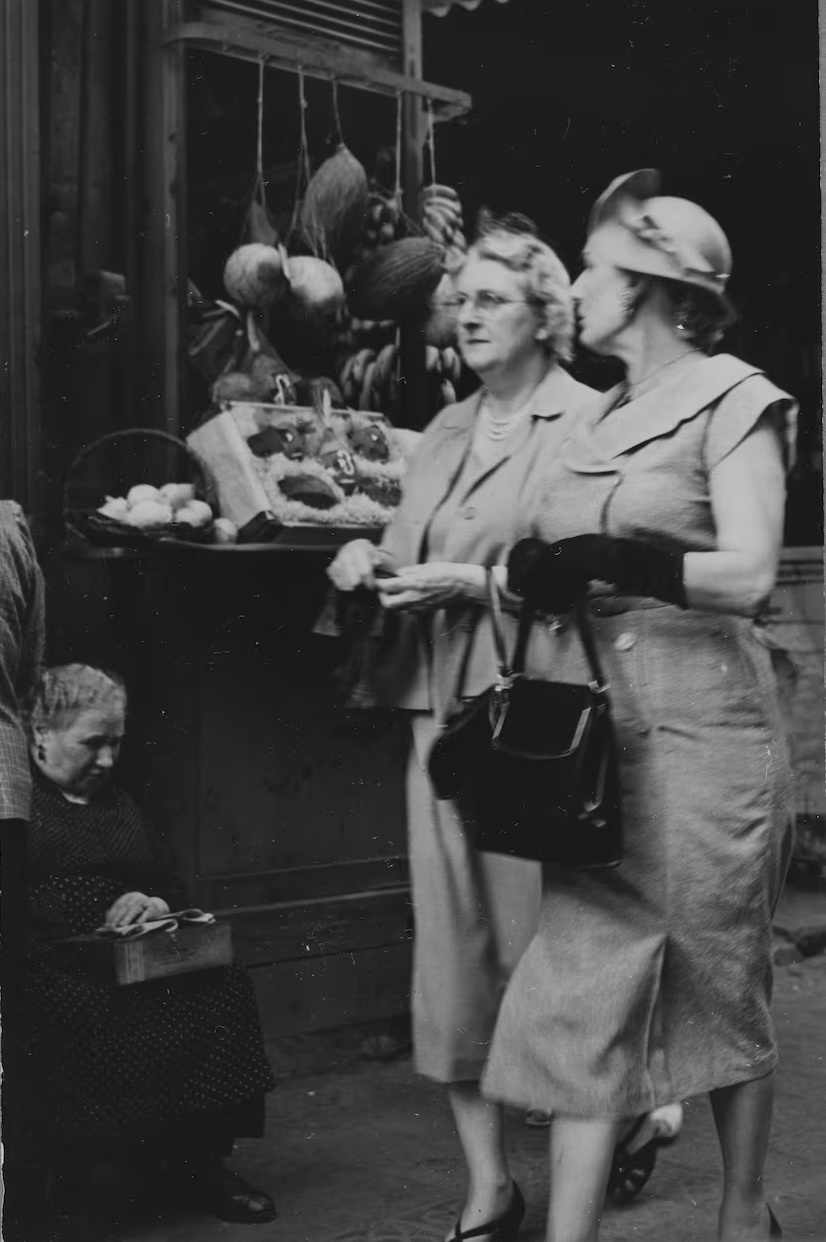
La Rambla, 1956.
Another curiosity in one of the display cases is "the contact sheet of Charlton Heston," she explains, showing the actor removing his knight's armor during the filming of *El Cid* in Spain to take a dip on a beach. On the contact sheet, Masats wrote "the numbers indicating the order the photos should follow, like in a cinematic sequence; but that order did not match the sequence in which he had taken the photos." This is a sign that he was already thinking about what was then a new medium—television—and about cinema.
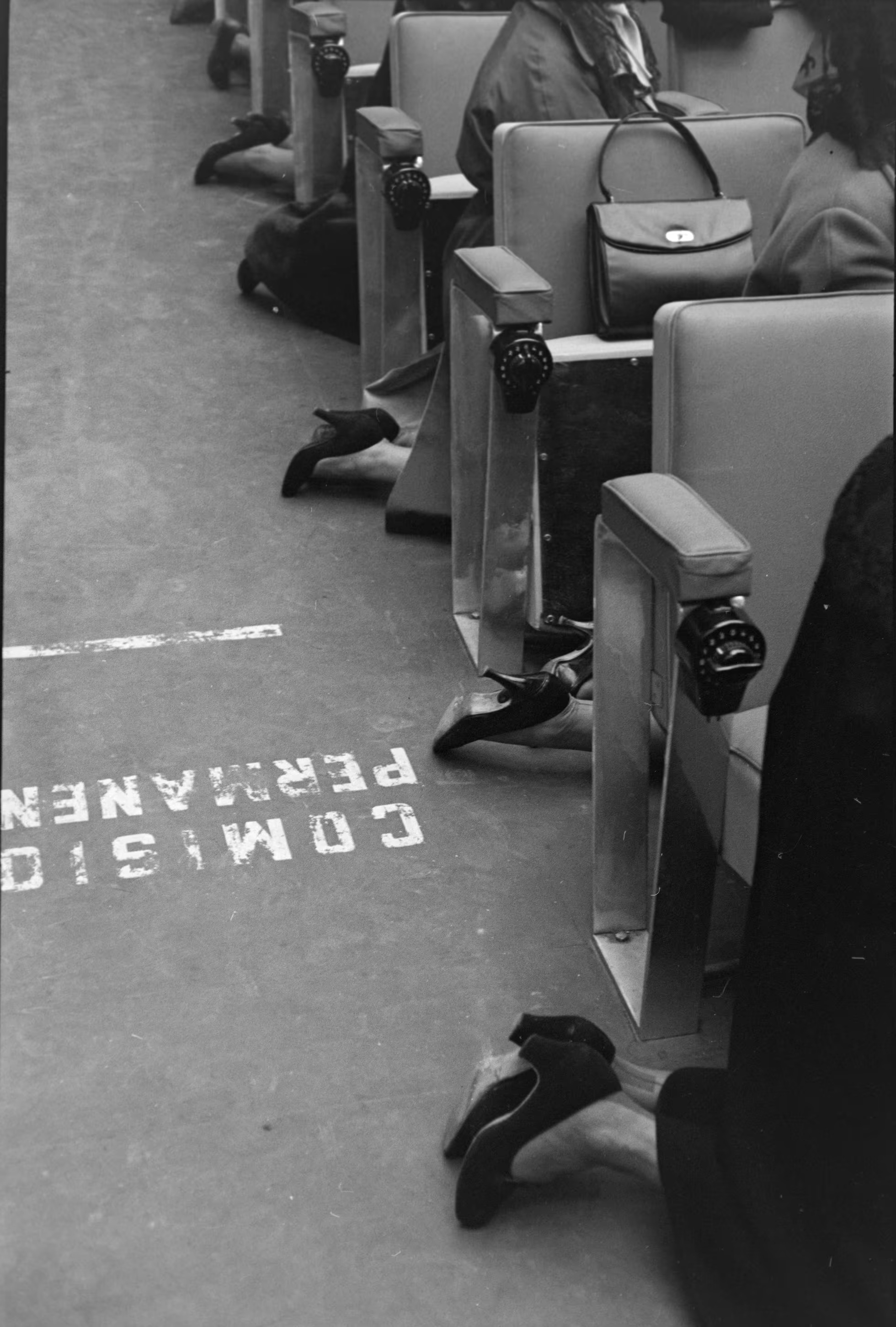
Misa de las Madres de la División Azul, Madrid, 1957.
The exhibition, the first major one in Spain since Masats' passing 11 months ago—Paris Photo dedicated a very successful one to him in November—covers his initial trajectory from 1953 to 1965 ("his best period," emphasizes Font). The year 1965 marked a watershed in his career because from then until 1981, he worked as a director of films and documentaries. The Foto Colectania exhibition, featuring excellent text on the labels by Jaume Fuster, author of a monumental doctoral thesis on Masats—something unusual in this artistic discipline—is also an act of justice, finally, from his city, which had not been particularly generous in showcasing his work. Another great value are the prints developed by Juan Manuel Castro Prieto.
Now, alongside his iconic images, visitors can view others that have been rarely seen, such as the self-portrait he took in the mirror of a bar in Seville, and previously unpublished works, like a superb portrait of dancer Antonio Gades during a film shoot. "All his photographs are forceful, they didn't have many interpretations," adds Font de Mora, for whom "it's incredible what he did in that first decade of work, where you can see his great narrative capacity with a brilliant touch."
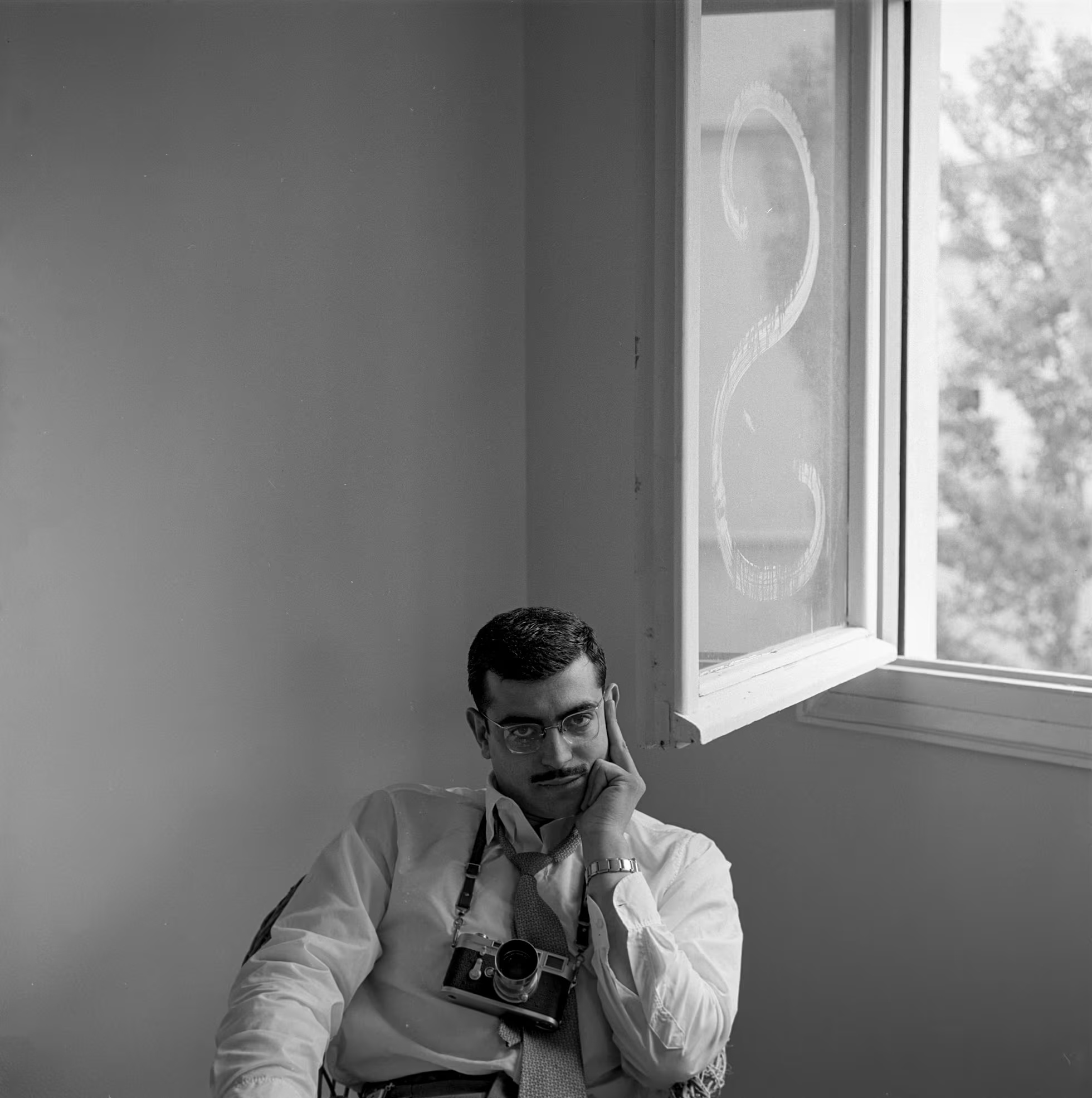
Ramón Masats, shot by Paco Gómez, 1958.
This refers, among other projects, to Sanfermines (1963), one of the great books in the history of Spanish photography, commissioned by the publishing house Espasa Calpe. The exhibition showcases vintage images from this book, prints made by the photographer himself. To capture the spirit of Pamplona's revelry, Sonia Masats recounts that her father joined a group of young men during that week of bulls and parties, but without drinking a single drop of alcohol. "On the last day, he got incredibly drunk and sat in a corner. He would see people passing by and say: 'Damn, what a photo... what a photo!', but he couldn't even pick up the camera."
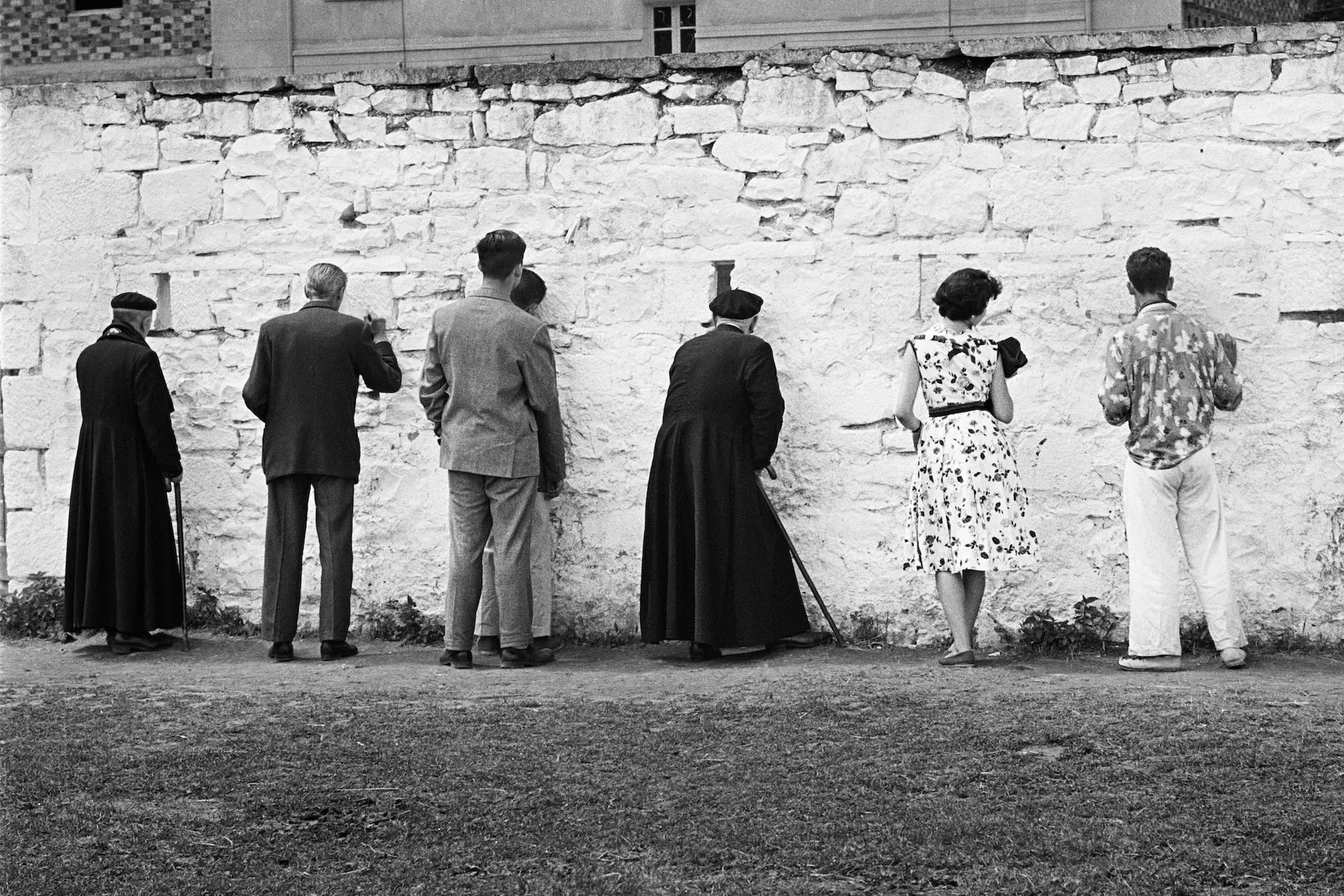
Sanfermines, 1957-60.
Another significant work is *Neutral Corner*, from 1962, pure film noir featuring boxers in somewhat sordid gyms in Madrid, for the Palabra e Imagen collection by the publishing house Lumen, a commission from editors Esther and Óscar Tusquets. The exhibition displays 17 images, some of which are prints by the author, showcasing his powerful blacks and, in this case, lacking his usual irony. We see modest boxers who aspired to make a living through their fists, images that inspired the texts of the book written by Ignacio Aldecoa. This fantastic trio of publications is completed by the edition that included his images in *Viejas historias de Castilla La Vieja*, published by Miguel Delibes in 1960. It was a photo book, also for Lumen, notable for the harshness with which the photographer portrayed life in Tierra de Campos.
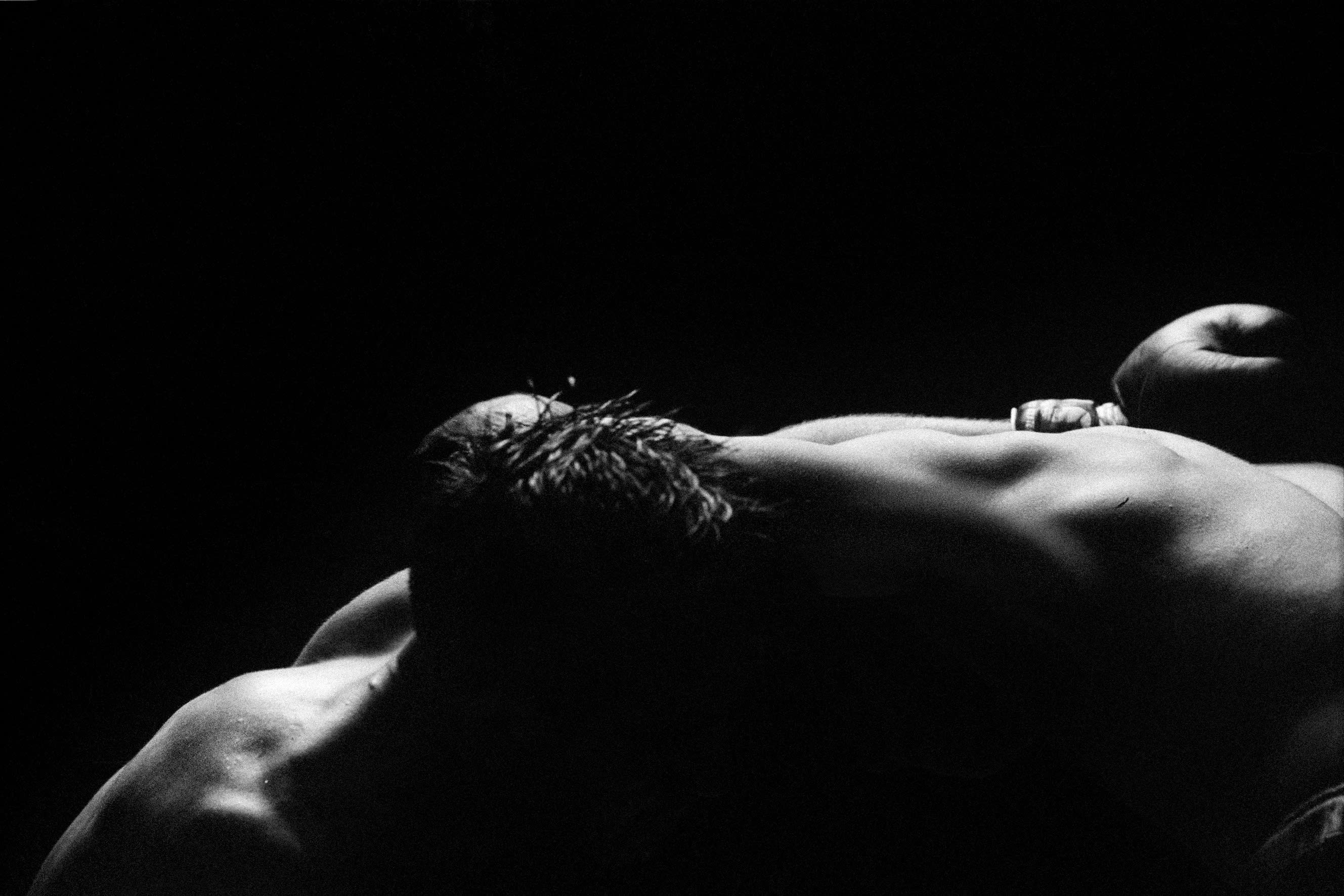
Neutral Corner, Madrid, 1962.
The title of the exhibition is taken from a phrase by photographer and curator Chema Conesa. He said of Masats that he was "silent because he insisted that noise should not disturb his images" and, as Font de Mora corroborates, "the photos Ramón took were, on many occasions, in noisy environments, with people, but he had the ability to disconnect from that." This quality was combined with Masats' famous eye, that talent for capturing magical moments—paraphrasing Cartier-Bresson's maxim—of scenes from life, such as the woman dressed entirely in black walking through Moral de Calatrava (Ciudad Real) as if she were a ghostly being.
One of the sections, titled Francoism, shows, among others, an image of the dictator shot from above where the papers he holds in one hand hide his face, surrounded by two microphones, a picture reminiscent of Chaplin's The Great Dictator, taken in Burgos in 1961. It's an example of his mocking gaze which, however, he never applied to humble people; with them, his vision was that of a humanist. "Masats and other photographers of his time were aware that certain photos they took would be censored. Self-censorship was present, so he kept this and other images to himself. He didn't intend to make political criticism, although there was criticism in his photos." Like the image of the rope holding the belts and ties of detainees in the sinister Francoist General Directorate of Security (DGS), a notorious torture center located in the Casa de Correos, in Puerta del Sol (Madrid).
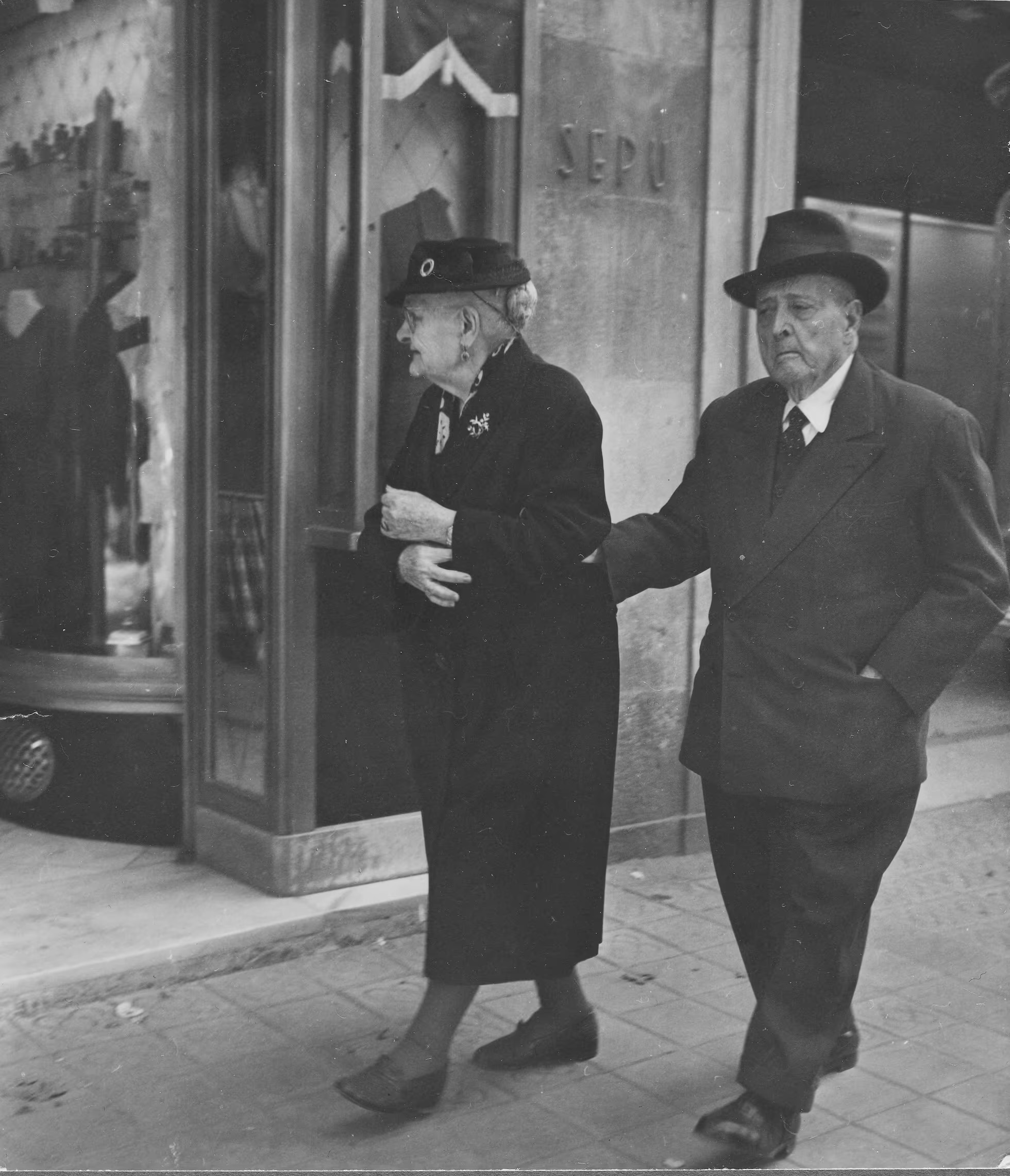
La Rambla, 1956.
Among the works rediscovered by Sonia Masats is the series her father took in the Cádiz town of Arcos de la Frontera. "It was a commission from a French anthropologist. My father went there several times over three years, but this man disappeared, didn't pay him, and so he kept the images. There's quite a bit more unpublished material from this work, enough for an exhibition."
At the end of the exhibition, there are several portraits, such as one of a smiling Luis Buñuel during the filming of Viridiana in Madrid. Masats used to say that the filmmaker wasn't very pleased to have him fluttering around with the camera, but as "the silent photographer" did his work with such discretion, Buñuel told him: "You've done very well because you haven't been a bother."
